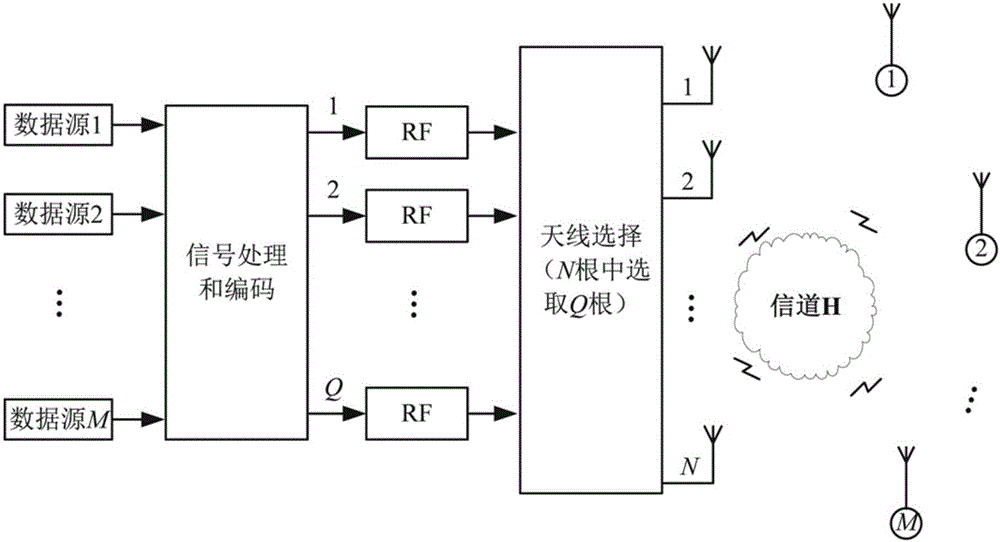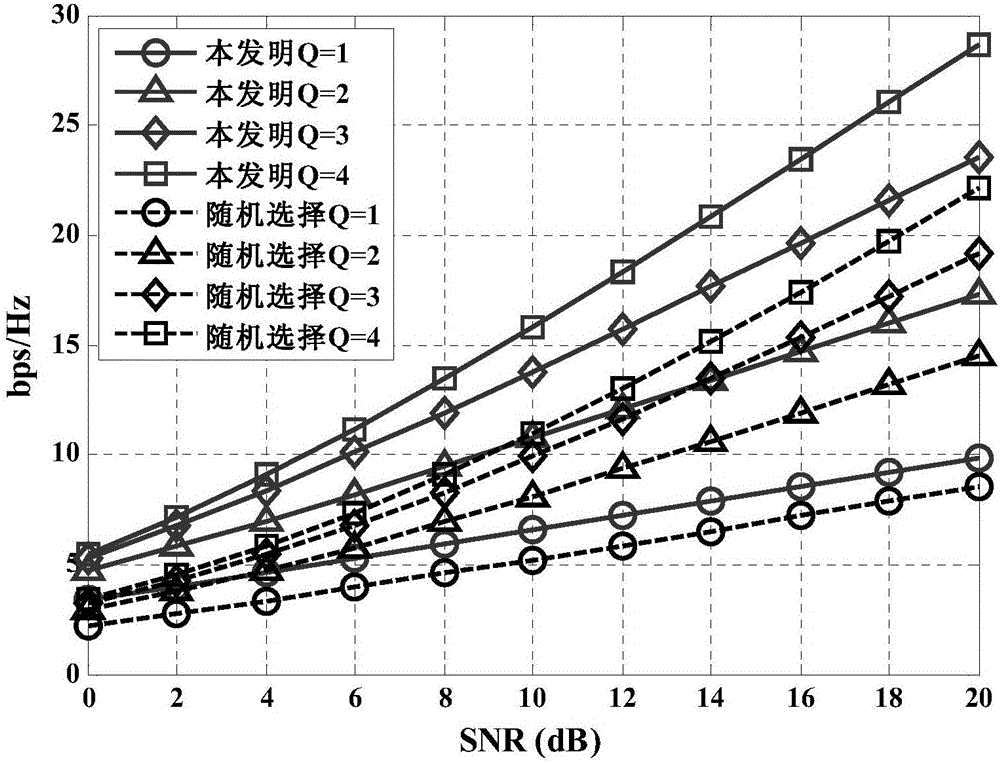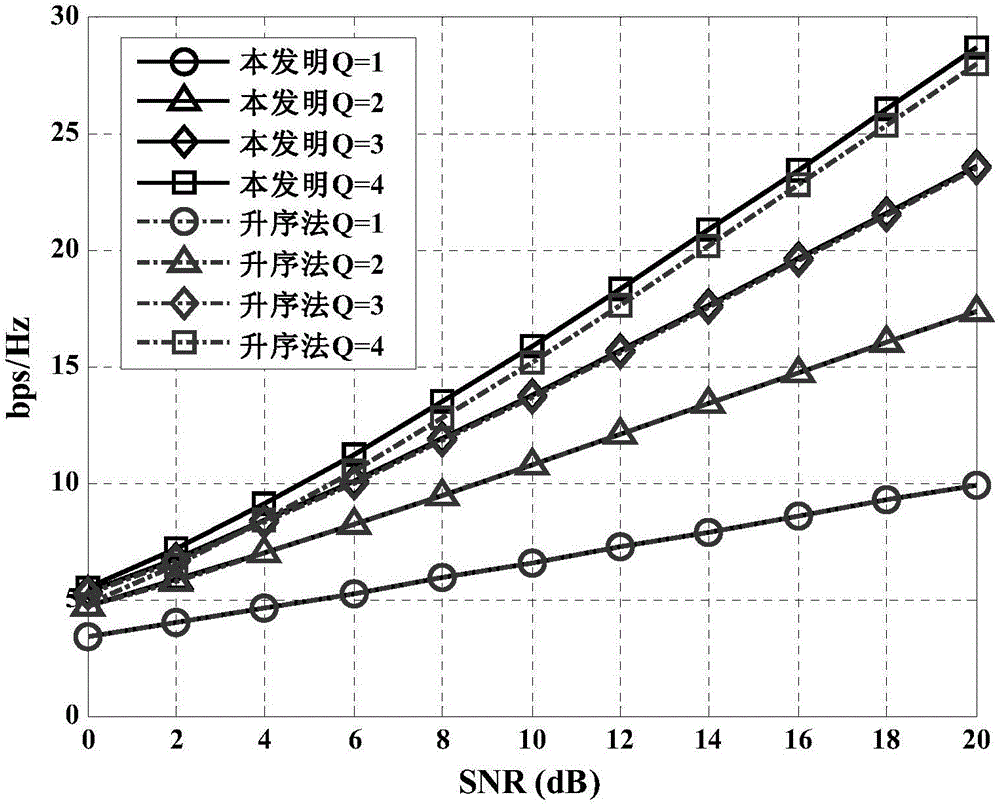Antenna selection method based on massive MIMO system
An antenna selection, large-scale technology, applied in transmission systems, radio transmission systems, diversity/multi-antenna systems, etc., can solve problems such as high complexity, and achieve the effect of reducing complexity and preserving performance
- Summary
- Abstract
- Description
- Claims
- Application Information
AI Technical Summary
Problems solved by technology
Method used
Image
Examples
Embodiment Construction
[0026] The present invention will be described in detail below in conjunction with the accompanying drawings and embodiments.
[0027] The system model applicable to the method of the present invention can be found in figure 1 . Consider the scenario of a downlink single-cell multi-user MIMO system: the base station is configured with N service antennas and Q radio frequency links, and serves M single-antenna users at the same frequency at the same time, where M≤Q≤N, such as figure 1 shown in . It is assumed that the base station can obtain complete channel state information from the base station to all serving users. Based on the complete channel state information and according to the criterion of maximizing the channel capacity, Q so-called optimal antennas are selected from the N serving antennas. The selected Q antennas are connected to the Q radio frequency links one by one through the switch.
[0028] first, Indicates the set of all candidate service antennas, excl...
PUM
 Login to View More
Login to View More Abstract
Description
Claims
Application Information
 Login to View More
Login to View More - R&D
- Intellectual Property
- Life Sciences
- Materials
- Tech Scout
- Unparalleled Data Quality
- Higher Quality Content
- 60% Fewer Hallucinations
Browse by: Latest US Patents, China's latest patents, Technical Efficacy Thesaurus, Application Domain, Technology Topic, Popular Technical Reports.
© 2025 PatSnap. All rights reserved.Legal|Privacy policy|Modern Slavery Act Transparency Statement|Sitemap|About US| Contact US: help@patsnap.com



